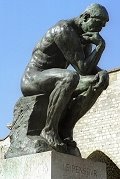.

Marriage 1.0 versus the Tender Years Doctrine
The battle to change Marriage 1.0 starts with The Declaration of Sentiments in 1848. The Declaration of Sentiments is the "official start" of feminism as a movement. Two other things happened in this year. The first was that 1848 was the year of revolutions around Europe, where many nations in Europe succumbed to the ideologies of liberal reformers and politicians began to radically alter forms of government while technological progress had radically altered the lives of the working classes. Socialist thought was already heavy in the air and had been brewing for some time already. The second was Karl Marx' release of the revolutionary Communist Manifesto wherein it is important to note that he begins the dialectical manipulation in the first line. "The history of all hitherto existing society is the history of class struggles." Really? Is that true? Marx was declaring an anti-thesis to start a dialectical argument. (There is no way that the history of all society is the history of class struggles.)
This is exactly what the Declaration of Sentiments does as well. Here is how Elizabeth Cady Stanton starts off her list: "The history of mankind is a history of repeated injuries and usurpations on the part of man toward woman, having in direct object the establishment of an absolute tyranny over her." Do you see the similarity to Karl Marx's statement above from the Communist Manifesto? It is simply untrue and there are hosts of factors she is ignoring. In fact, it is so ridiculously wrong that one doesn't even know if it ought to be refuted. It's like saying the sun exists at the bottom of the ocean. But truth is not the point. The point is to present an anti-thesis to the thesis so that dialectical manipulation can begin.
.

.
There are 16 points made after this statement. They all are either false statements, in that they don't take into account a vast amount of other factors (it's only relatively true) or they are simply false statements altogether. For example. Points one to four are about the vote and that men had prevented women from voting on the foundation of the society they live in. But 99.99% of men didn't have anymore say in it than women (Only 55 delegates were present at the Constitutional Convention) - yet all men are to blame. In point four she declares that the elective franchise is the first right of a citizen. Yet that is blatantly untrue. Men did not yet even have universal suffrage in 1848, and 'the right to vote" is guaranteed nowhere. (Landless white men did not receive suffrage until 1856 while non-white men received suffrage by 1870). Your rights are supposed to be guaranteed despite how the majority votes, remember? And the US Founding Fathers mentioned "democracy" nowhere when they created a republic (rule by law, not by sentimental voting). Every point in the Declaration of Sentiments is built on such wobbly logic.
As far as undermining marriage goes, this is addressed by points five to eight:
5 - He has made her, if married, in the eye of the law, civilly dead.
6 - He has taken from her all right in property, even to the wages she earns.
7 - He has made her morally, an irresponsible being, as she can commit many crimes with impunity, provided they be done in the presence of her husband. In the covenant of marriage, she is compelled to promise obedience to her husband, he becoming, to all intents and purposes, her master - the law giving him power to deprive her of her liberty, and to administer chastisement.
8 - He has so framed the laws of divorce, as to what shall be the proper causes of divorce, in case of separation, to whom the guardianship of the children shall be given; as to be wholly regardless of the happiness of the women - the law, in all cases, going upon a false supposition of the supremacy of a man, and giving all power into his hands.
Point five is obviously not so much a point in itself, but rather a lead-in to explain her anti-thesis for the next three points.
Point six is claimed to be an abuse which men have perpetrated against women, yet the laws she is talking about were designed specifically for women's benefit in the marriage contract. It was not possible for spouses to own property independently from eachother. As soon as a marriage occured, all titles went into the husband's name. It was arranged this way because women hypergamously tend to marry men with more resources than they have. The vast majority of women "move up" when they marry. Very, very, very few women move down when they choose a long term mate, even today. What this law really did was combine the male's greater financial wealth (in 99% of cases) with that of the lesser wealth of almost all women who got married. You see, if women are allowed to keep property titles outside of marriage, then so would the men be allowed as well. And if that were the case, the majority of wives would not be able to fully benefit from their husband's productivity and wealth creation. It's a blatant lie to describe this as an act of tyranny and oppression against women. However, it does start the dialectic, and it does end up that these laws are scrapped - leading to the undermining of marriage considered as "one flesh."
Point seven can hardly be made into a case for the oppression of women at the hands of men. Let me get this straight. You breaking the law and me doing the time in jail for it is me oppressing you? Have a look at how this man oppressed his wife:
Sends Husband To Jail To Aid Suffrage Cause -- The Milwaukee Journal, Sept. 21, 1912
Mrs. Mark Wilks, whose husband is in jail because she refuses to pay her taxes, is credited with discovering a new and formidable weapon for the suffragettes. The suffragettes are generally women of property and they will follow Mrs. Wilkes example immediately, it is said.
The plan will work only in cases of husbands whose wives have independent incomes. Nor will it work in cases where the husbands pay taxes on their wives' incomes. Some husbands, like Wilks, haven't enough money to pay their wives taxes. Suffragette husbands who can pay are counted on to refuse to do so. Thus will a large portion of the Englishmen with suffragette wives be in jail shortly.
Under the married women property act a husband has no jurisdiction over his wife's property and income. Under the income tax he is responsible for her taxes. If the taxes are not paid, the husband, not the wife, is imprisoned. Mrs. Wilks refused to pay her income tax - $185 - and her husband was locked up. He will spend the rest of his life in prison unless his wife pays or the law is changed. When at liberty he is a teacher in Clapton.
.

.
The eighth point is the one which undermines the ancient contract of marriage entirely. The ancient contract of marriage is not about romantic love. Those notions are relatively recent. No, it was an economic contract between a man and a woman, whereby the man trades his lifetime's work of generating "excess resources" - which he is far better suited to procure than women - for children that are his own. In other words, he would have 100% presumed custody of any children produced from the woman's sexuality for the duration of their time together. It was about the concept of property rights, or in this case, of custody rights. The products of his wife's sexuality (children) became "his" and the products of his life's work became "hers."
“I would die before I will give up the child to its father.” -- Susan B. Anthony, Quoted in Phyllis Chesler, Patriarchy: Notes of an Expert Witness (Monroe, Maine: Common Courage Press, 1994), p. 38.
Also, Elizabeth Cady Stanton claims this practice of father-custody was built on the presumption of the supremacy of man. This is another lie. The reason why ancient marriage was structured that way is because there is a hierarchy of how "love" works. It kind of goes like this:
Men love women --> Women love children --> Children love puppies.
Men's love for women is greater than women's love for men, just like parental love for children is greater than children's love for their parents. The Bible indicates this principle when it commands men to love their wives, but commands wives to honour their husbands in return, just as children are commanded to honour their parents, not love them.
When children are placed in the position of 100% presumed custody of the father, it strengthens the weakest bond in the family - that between father and children. Fatherhood mostly doesn't exist in the animal world, while motherhood is positively everywhere. By attaching fathers and children directly to one another, the mother now equates her children with the father. If she divorces the father, she knows she will lose access to her children. Therefore, in order to maintain her love with her children she must also maintain her love with their father.
If one believed that men and women were the same, one might project the female behaviours of today in modern family court as how men abused such rights in the past. However, this is not the case. Men's greater love for women than women have for men made it that the vast majority of men never tried to remove their wives from the children. However, after presumed custody was shifted from father to mother by around the 1870's, divorce rates began rising... and kept rising right up until the present day.
.

“Between 1870 and 1920 the divorce rate rose fifteenfold, and by 1924 one marriage out of seven ended in divorce" -- James H. Jones, Alfred Kinsey: A Public/Private Life (New York: W. W. Norton, 1997), p.292.
The ultimate problem of marriage and divorce today stems from the dialectical arguments the suffragettes introduced a century and a half ago, wherein they undermined the ancient contract of marriage which had held marriages strong and divorce rates low constantly throughout the West's long history. This was far more significant than anything the second wave feminists did with no-fault divorce.
How did the suffragettes dialectically change custody? Well, it didn't happen all at once, but rather in small incremental "concessions" made by society to appease the shrieks of the suffragettes. Eventually it developed into the Tender Years Doctrine. This is the beginning of the "Best Interests of the Child Doctrine," (something which is purely relative, whereas custody laws are exact and absolute) and we have been dealing with it ever since. The (British) Custody of Infants Act of 1839 already gave judges some power to over-ride a father's custody rights in certain instances, particularly in establishing mother-custody for children under seven years old. By 1873, Parliament extended the age of mother-custody to sixteen years, effectively undermining father-custody altogether. (In some states, the age was thirteen). This is known as the Tender Years Doctrine, and although it was first established in Britain, it spread around the world fast as the British Empire was at its peak in the late 19th Century. The Tender Years Doctrine was similarly used in the USA as a principle in the courts to establish the arguments of parental custody.
Because the rest of the points of the Declaration of Sentiments are not directly addressing the points I am making in this article (they are about property tax, the workplace, education and religion/morality), I will not go into an in depth explanation of them here except briefly to point out that consistently these arguments are fabrications or half-truths that are not so much meant to be truthful, but rather to start dialectal manipulations.
***note*** There is a long stretch of time between the suffragettes and "second wave feminism." Many people consider them to be entirely different movements. However I can assure you that from a Marxist perspective, they are both after the same dialectical goals. (This applies to other areas of society as well, such the vote and the effects of universal suffrage on the mechanics of our governmental structures.) Keep in mind that the suffragette movement "peaked" after World War One and on into the Roaring Twenties - a time of plenty when it was easy for society to afford feminist ideology. When the Great Depression came, followed directly by the Second World War, the West went through extreme hardship and it was women themselves who openly opposed feminism. For example: When jobs were scarce, it was basically women who shoo'd other women out of the workplace because it meant that a working woman had taken away a job from some other woman's husband, thereby harming women. After the extreme hardships of the 30's and 40's, we have only one generation which lands us squarely into the sexual revolution of the 60's and 70's, where feminism and Marxism picked itself up and kept on marching.
Part Two of The Marxist Dialectic of The Family: Marriage 1.5 versus The Second Wave, will be addressed at a later date. Be sure to tune in. I know you're all on the edge of your seats. Until then, keep your stick on the ice.
MGTOW

....................
..oooO...........
..(....)...........
….\..(............
…. \_/...........
….\..(............
…. \_/...........
………....Oooo..
………....(....)…
…………..)../....
..........(_/......
………....(....)…
…………..)../....
..........(_/......
....................


















































